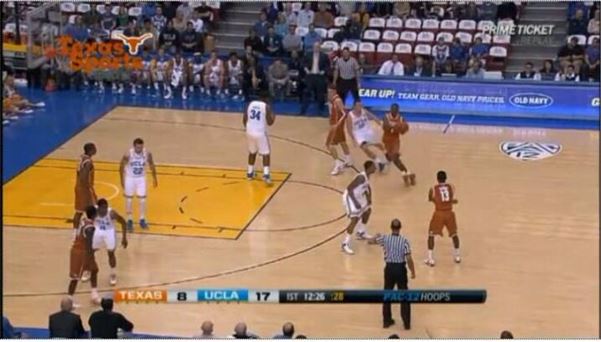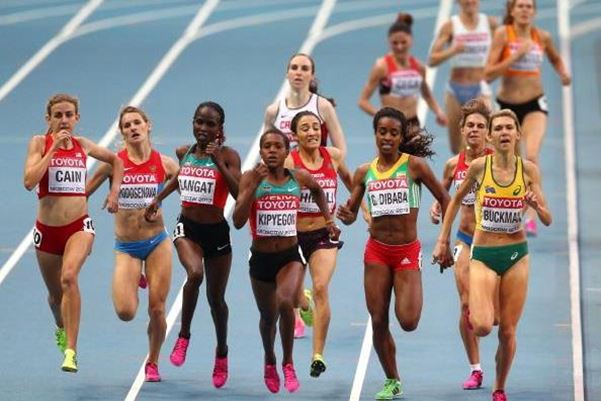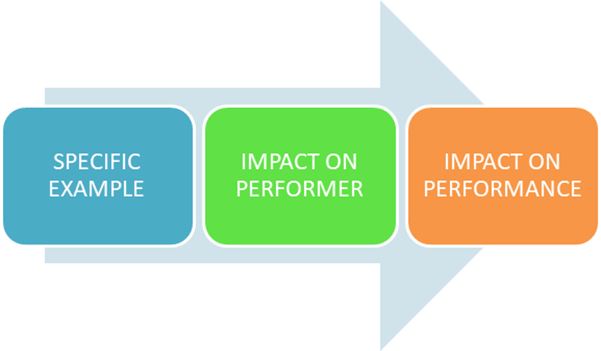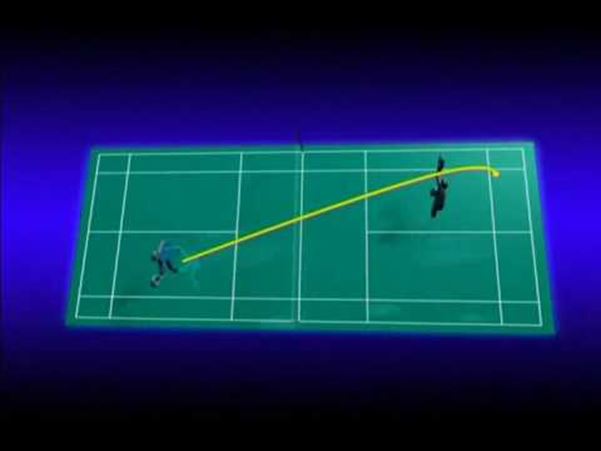Factors Impacting on Performance
Answer tip: when writing your answers for factors impacting on performance, you want to gain some real depth so consider the impact it initially had on you before considering the impact it then had on the game. The impact on the game could be an impact on a teammate, the opposition or the play within the game.
Answer examples KEY:
Statement of sub-factor, situation and whether positive or negative
Impact on me/performer
Impact on game/teammate/opposition
Mental factors relate to several different psychological aspects that underpin a performance. These factors can involve the ability to process, decipher and focus on certain pieces of information whilst also being able to manage certain psychological traits like anxiety and arousal levels in a manner that will allow performance to be enhanced rather than disturbed.
PROCESSING, DECIPHERING AND FOCUSING ON INFORMATION
Mental factors that relate to processing, deciphering and focusing on information requires the individual to assess evolving stimuli around them and use that information to guide their decision making and problem solving processes. This can also relate to them needing to hone in on important stimuli and block out irrelevant pieces of information such as the crowd to help them be successful. In the picture above, we can see Rory McIlroy assessing the layout of the green as he eyes up a putt. These assessments will aid his problem solving and decision making processes which will hopefully help him ‘save par’.
ANTICIPATION
Definition: the ability to ‘read the game’ by quickly and accurately predicting an opponent’s next move before they have actually completed it.
Case study: Germany goalkeeper Manuel Neuer is often described as one of the best ‘sweeper-keepers’ in football because of his ability to ‘read the game’ and rush off his line to make clearances before an attack has been fully executed by the opposition. Neuer can use the visual cues in the game to guess when a pass is being played through his defence to quickly and accurately come out and prevent any 1 on 1 chances on his goal.
Positive example: ‘Being able to anticipate my opponents next move in rugby helped me perform well. Having noticed that my opponent in possession kept looking at his teammate to the right of him, I guessed that the pass would be played that way. This lead to me positioning myself appropriately before the pass was released and making an interception when it was played. This lead to me gaining possession for my team and starting a break away against the opposition.’
Negative example: ‘In tennis, I was unable to anticipate what my opponents next shot would be in the rally as I could not pick up the cues in his performance. This meant that when they played a drop shot, I was slow to react as I did not see it coming. This lead to me being unable to reach the ball before bounced a second time and losing the point.’
CONCENTRATION
Definition: the ability to stay on task by completely focusing attention on something important for a period of time. This also means that zoning in on vital pieces of information whilst blocking out irrelevant stimuli. Case study: in the 2014 Ryder Cup, Jamie Donaldson knew that should he get his approach shot to the green correct, he would be within touching distance of winning the Ryder Cup for Europe. With an excited home crowd, Donaldson was capable of focusing completely on the sub-routines of his shot and his tactical approach to the green. He was also capable of blocking out the crowd and the match situation in order to be successful.
Positive example: ‘High levels of concentration helped me when performing man to man defence in basketball. This was because I was able to focus completely on the movements of my opponent and block out the movements of others on the court. This lead to me staying tight to my opponent and denying him space. When a pass came in to him, I was therefore able to put him under pressure and force an error to regain possession for my team.’
Negative example: ‘Low levels of concentration stopped me running out an opponent in cricket. Having picked up the ball, I lost focus on the sub-routines of my throw as I got distracted by the movements of the batter trying to get back to the stumps in time. This lead to my throw lacking accuracy and not finding the wicketkeeper as the batsman got back in time.’
DECISION MAKING
Definition: the ability to make the best option available to you. This is based on what is happening around you and can become better and more automatic with experience.Case study: Andy Murray is well known to be creative and make use of the top spin lob when being pressurised by his opponent at the net. Murray would select this shot rather than a passing one due to working out both the position of his opponent and the space on the court.
Positive example: ‘My decision making positively impacted my performance in badminton when I saw that my opponent was out of position at the back right of the court after returning my overhead clear. Having noticed this, I decided to play a drop shot to the front left of the court to exploit space. This lead to my opponent failing to make up the ground in time and me winning the rally.’
Negative example: ‘My decision making negatively impacted my performance in football when I made the wrong decision in an attacking 2vs1 situation. Despite noticing my teammate in space, I decided to try and dribble past the defender to make more space for myself to shoot. This lead to me being tackled and our attack breaking down.’
PROBLEM SOLVING
Definition: the ability to find a solution to a certain problem or situation during a performance.
Case study: golfers must have excellent problem solving skills as they plot their way to the hole in the least amount of shots. In doing this, they will need to consider problems such as the width of the fairway, bunkers, waters and tress before finding a solution they can implement to help them be successful. In the video below, we see Sergio Garcia trying to solve the problem of playing out behind a tree. If he follows through he may break his club and get injured but then if he simply chips out to the side, he will remain just as far away from the hole and drop a stroke. Watch how his shot selection and swing adaptation helped solved the problem.
Positive example: ‘I used my problem solving when putting in golf to help me be successful. When reading the green, I worked out that the land was uphill and slanted to the right. This then lead to me realising that my putt should be hit with force and be aimed slightly left to the hole. Doing this resulted in my putt being accurate as I hit it with enough force and accuracy to overcome this problem.’
Negative example: ‘My poor problem solving skills hindered my performance in golf as I wrongly calculated the distance to the burn when driving in golf. This lead to me selecting my driver and going for power thinking the burn was further away than it actually was. As a result, my drive ended up going into the water and I lost a point when I should have used my iron to tee up had I solved the problem correctly.’
PSYCHOLOGICAL TRAITS
On top of the above factors, the mental umbrella also covers psychological traits that can have major impacts on performance, training and injury rehabilitation. How a performer channels psychological traits such as levels of anxiety, arousal, mental toughness and motivation will play a huge role in their development. In the pictures above, we see the ‘Greatest Ever Olympian’, Michael Phelps, whose levels of commitment and desire helped him undertake daily training sessions lasting five hours to get him into peak condition every Olympic macrocycle.
ANXIETY
Definition: an unpleasant state of inner turmoil that can often lead to performers ‘choking’ before important competitions and during big match moments. Feelings such as stress and nervousness are common which can have effects on both cognitive and somatic traits. Cognitive anxiety relates to feelings of self-doubt and being consumed with negative thoughts which often impacts on performers’ confidence levels. Somatic anxiety refers to the ‘shakes’ and muscular tension which can negatively impact the fluidity of movements and consequently, skill accuracy.
Case study: at the end of the video below, we see Nicolas Anelka stepping up to take a decisive penalty in a European Cup final. If Anelka misses, his team loses and their season is over. Consider the thoughts racing through his mind and the way his body feels as he steps up in front of the opposition fans who are taunting him and trying to put him off.
Positive example: ‘Being able to control my cognitive anxieties helped me overcome major doubts before my 1-off performance when we were playing against opponents who had beat us by a big score last time out. In being able to control my anxieties, I was able to think positively about my own performance and overcome any self-doubts. Such control helped me go into the match in a confident mood and I started the game creatively whilst attacking my full back to beat him and put some crosses into the box.’
Negative example: ‘In the last moments of my basketball match, my somatic anxieties got the better of me. When taking a free throw to tie the match, I started to feel the biceps, triceps and deltoids in my shooting arm tense up. This meant that when I went to shoot, my movements were rigid and not fluid leading to my shot lacking accuracy and missing.’
AROUSAL
Definition: the state of alertness, stress and vigilance. It is imperative that performers have an optimal level of arousal when performing. This can help them maintain focus and have the correct amount of drive to be successful. Should it be too high then it can lead to poor decisions being made and emotions such as anger getting the better of them as they are too ‘pumped up’. If it is too low, then performers may suffer from fear of making mistakes or getting injured during competition which can lead to them performing below their peak.
Case study: in 2015, Steven Gerrard was playing in his final match for Liverpool versus Manchester United – a heated rivalry. Before kick off, Gerrard learnt he was on the bench and as he watched the game unfold, he says he ‘got more and more pumped up’ in his autobiography. When called to go on, his level of arousals where well above his peak and had a direct impact on his stress and anger levels as can be seen in the video below.
Positive example: ‘Being optimally aroused help me focus whilst using zonal defence in handball. Being in this peak mental state helped me be alert to what was going on around me and helped me fulfil my roles and responsibilities as I was aware of what was going on both in my zone and my teammates zones. This helped me move in unison with my other teammates as we kept tight together and also make important interceptions when the ball came into my zone to limit opposition attacks.’
Negative example: ‘Before my rugby match, my low arousal levels stopped me getting ‘up for the match’. This meant that when I went into a tackle, I was not fully committed and the opponent broke through my half-hearted tackle. This lead to them driving into space and scoring a try as they broke through our defensive line.’
MENTAL TOUGHNESS
Definition: the capacity of a performer to deal effectively with stressors, pressures and challenges during a performance and still being capable of performing to the best of their abilities. Mental toughness can also relate to how a performer handles a certain training schedule and continues to work through it in order to get themselves into their peak condition despite how tough it may be.
Case study: in 2013, Andy Murray was serving to become the first men’s Wimbledon champion since 1936. The British crowd and media were excited as Murray raced into a 40-0 lead and served for the match. He lost the next three points as the game went to deuce. Suddenly, the crowd was tense, Djokovic grew in confidence, and it looked like Murray may miss out again. However, he was mentally strong enough to block out all the pressures and serve to win the title.
Positive example: ‘Being mentally tough helped me when doing my rehabilitation work when returning from an anterior cruciate ligament injury. This was because I found it tough going to the gym on my own every morning to do the most basic of exercises to build up the muscles around my knee. Being mentally tough however made me kept going as I never lost sight of how much I wanted to be back playing. This lead to me never missing a rehab session and coming back stronger than before.’
Negative example: ‘Low levels of mental toughness negatively impacted my tennis performance. When serving against a break point, I hit my first serve into the net. Suddenly I could not block out all of my doubts and the pressure of having to get the next serve in. This lead to me hitting a weak serve that hit the net again as I did not focus on my sub-routines as I was not tough enough to block out the pressure.’
MOTIVATION
Definition: how much drive we have to achieve our goals and improve our performance. Such a drive can come from intrinsic values within us as we strive to meet and exceed our own expectations or from extrinsic values where we are driven by rewards such as money and trophies. The levels we have of each form of motivation will determine how hard we work and the sacrifices we make to be successful.
Case study: boxer Anthony Joshua was very motivated to become World Heavyweight Champion and underwent training camps that saw him complete three training sessions a day. Not only did he give his all in training to get into the best possible physical condition, he also followed a strict diet that enabled him to energise his sessions and recover quickly. Such efforts were all underpinned by Joshua’s high motivation levels.
Positive example: ‘Being highly motivated aided my performance in badminton. I was really motivated to win my match and this meant that I gave my all during every rally. This lead to me reaching most of my opponents’ shots and they started to get lose confidence as their best efforts were not beating me. This resulted in me winning most of the longer rallies as he gave up and I won the match.’
Negative example: ‘Having low levels of motivation negatively impacted my performance in football. As I wasn’t motivated, I gave up when the game got tight and stopped fulfilling my defensive roles and responsibilities. This lead to my direct opponent finding more space in the attacking third as I stopped tracking them. This resulted in them creating chances for his team and my team’s dynamics dropping as my teammates shouted and criticised me.’
TASK 1
Watch the attached video and then read the model describe answer below.
Describe the impact mental factors had on your performance. (1).
‘Anticipation helped me when I was in goals and about to face a penalty in football. I looked at where the striker was looking. I noticed he was looking to do my left. I then predicted he would go this way and dived early. I then got across my goal quickly and made the save.’
TASK: can you now re-write this if the question was explain the impact mental factors had on your performance. (1).
Consider what words or phrases would need to be added in to your answer as it changes from describe to explain.
TASK 2:
Look at the player wearing white 34; how is this good concentration in man to man marking? Consider:
Impact on performer:
- A) What is he focusing on?
- B) What is he blocking out?
Impact on performance:
- C) How can this help him in relation to his opponent?
- D) How can this then help his team?
Put this together and evaluate how effective mental factors were during your performance. (1).
TASK 3:
Watch the video below and answer the question that follows.
How did Sharapova (red) make the correct decision to win this rally?
What is the sporting example – what is going on in the video?
How did decision-making impact Sharapova – where was her opponent on the court? What did Sharapova decide to do?
How did this then impact the rally?
Put this together and describe the impact mental factors can have on your performance. (1).
TASK 4:
SITUATION:
You are in 2nd place as you approach the final lap of the 1500m. Your legs are sore, and you are starting to tire.
- How would being mentally tough help you as you hit this final lap?
- Break it down further; what exactly could be happening to your legs?
- What could this make you want to do?
- But because of your mental toughness, you do what?
- How does that help?
- How could this then impact your overall performance in the race?
Put this together and analyse the impact mental factors had on you performance. (1).
TASK 5:
Look at the feedback below and answer the question that follows:
‘In your badminton match, you appeared to work very hard during every rally. This was obvious because you chased down every shot.’
Use the template below to draw a flow chart and…
- A) Select a command word.
- B) Use that command word to explain to the examiner the impact mental factors had on your performance. (1).
SITUATION:
You are playing an opponent who is very strong at the net but who lacks power from the back of the court. You are about to serve. Analyse how problem solving helped you in this situation. (1).
MENTAL SCENARIO:
Below is a set of data collection results a Higher PE pupil obtained when completing a performance profiling wheel.
BASELINE RESULTS
1 = VERY POOR; 10 = VERY STRONG
CRE: 1/10
DECISION MAKING: 2/10
CONCENTRATION: 2/10
PROBLEM SOLVING: 1/10
MENTAL TOUGHNESS: 9/10
MOTIVATION: 9/10
Analyse why the Higher PE Pupil obtained these results when initially collecting data on their performance. Your answer should make reference to mental and physical factors. (4).
Things to consider:
- The question is analyse: pick out the important parts of the scenario; the scores obtained! Is each sub-factor a strength or a weakness?
- In reference to performance, break it right down to the ‘nitty gritty’: how did someone score this? What exactly were they doing and how were they doing it in their performance?
- For those who want to get to an ‘A’ level standard: how can one factor influence another? How could the CRE score lead to some of the results in the mental sub-factors? To do this, break the CRE result right down to the nitty gritty then make the link and give the nitty gritty of the impact that then has on say decision making.




